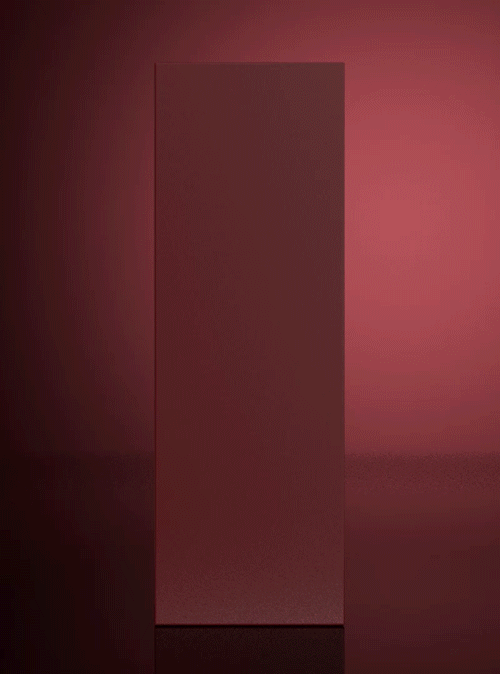Honoring Flavors: Sui Hua Appreciation Series | Pica
I really enjoy creating traditional holiday packaging because they not only carry thousands of years of Chinese culture and history, but also embody the sincere and rich emotions of the Chinese people. For the Mid-Autumn Festival mooncakes, I present them with simple patterns, plain shapes and pure colors. Patterns with traditional beautiful meanings such as quails, bottles and rabbits have become symbols for people to express their thoughts and good wishes during festivals and under the moonlight. I hope that mooncakes, a traditional pastry, will bring solid blessings rather than weak preciousness. Perhaps this is also the reason why I haven’t innovated the flavors!
The pastry specially selected the old Manchu pastry shop in Chengde, which has a long history and cultural heritage. The old brand here embodies a profound historical and cultural heritage, inheriting ancient culinary skills, and is handmade by master craftsmen. We hope that everyone can experience the beauty of culture while enjoying the mooncakes.
- Shuwei, Qi, head of Pica
/Pica’s East Meets West Series: Mid-Autumn Festival Gift Box Show/
Honoring Flavors: Sui Hua Appreciation
(Yearning for Beauty in the Season)
Sui Hua Appreciation: Manchu pastry, aiming to present delicious delicacies, appreciate the splendid years, and convey the beautiful blessing of “time passes, but the sun and moon are always there.”
Glowing moonlight bathes in perfect circle
The Sui Hua Appreciation Series continues the resplendent lunar aesthetics of the 2023’s Yan Yue Zhu Guang Series - with half a crescent moon on either side of the box, as if waiting for the other half of the moon, symbolizing longing. Amidst the vast expanse of sky, the full moon shines bright and luminous; it is precisely in its brilliance that homesickness becomes ever more intense.
Classic, harmonious, and timeless
The Sui Hua Appreciation series features a contrasting design of vermilion and gilded textures, combined with a classic deep purple background, blending modern design with retro style. It incorporates design elements commonly seen in the Beijing-Hot River Palace such as gourds, rabbits, quails, and jade vases, decorating them with a two-color contrast to create a sense of layers, symbolizing the good meanings of blessings, prosperity, harmony, and peace.
Quail - Peace and prosperity
Jade Rabbit - Harmony
Gourd - Good Fortune
Jade Bottle - Security
Ancient production method from the 17th century
In 1711, Emperor Kangxi visited the Chengde Mountain Resort and named it “Bishu Shanzhuang.” The imperial chef searched for local delicacies, and soon discovered the renowned Manchu-style Baiji Pastry Shop, known as the “pride of Chengde.” The head chef at Baiji Pastry Shop skillfully used local premium ingredients such as Bashang pine nuts, sesame oil, almonds, wild roses, and hawthorn from Wuling Mountain to create delicious fillings. Emperor Kangxi enjoyed the food and designated it as the “imperial snack of the Chengde Mountain Resort.” The traditional pastry became a milestone in local pastry making. After retiring, the head chef opened the “Royal Inheritance Pastry Shop” to pass down the traditional Manchu pastry-making techniques, which have since become famous and passed down through generations.
Royal Imperial Pastry
Having inherited the craftsmanship of making pastries for five generations, the century-old Imperial Pastry faces new challenges in the 21st century. After years of research and development, it has finally created an authentic pastry flavor that amazes the northern region.
Recreating Handmade Mooncakes
from Rehe Continues the Tradition
Pica’s East Meets West Series, in collaboration with Chengde Imperial Inheritance Pastry, have launched the Sui Hua Appreciation Manchu pastry gift box. Starting today, it is available for sale, continuing the traditional exclusive recipe of Manchu pastry, and carrying on the classic with exquisite craftsmanship, paying tribute to traditional festivals.
Pica’s East Meets West Series integrates art with life, is a self-owned brand that openly sells Mr. Shuwei’s pioneering inspiration, and in the future, you can purchase your favorite life art products on the official mini-program. After the rise of national trend and artificial intelligence, mass production has become tedious, too easy to control, replicate, and produce, making work a passionless endeavor.
Creating requires some random and fun things to spice it up. I also want to produce some non-standard services. For designers, a positive response to beauty should be as normal as eating and breathing. In short, in “Pica’s East Meets West Series”, I want to resist the trends I don’t like and create something “more like Chinese design.” This is the original intention of my work. The Kirin logo combines the calligraphic languages of the East and the West, created by two artists from China and Italy. The Kirin has a legendary story of making tea to dispel pestilence, and many people turn it into a tea pet, symbolizing auspiciousness.




























